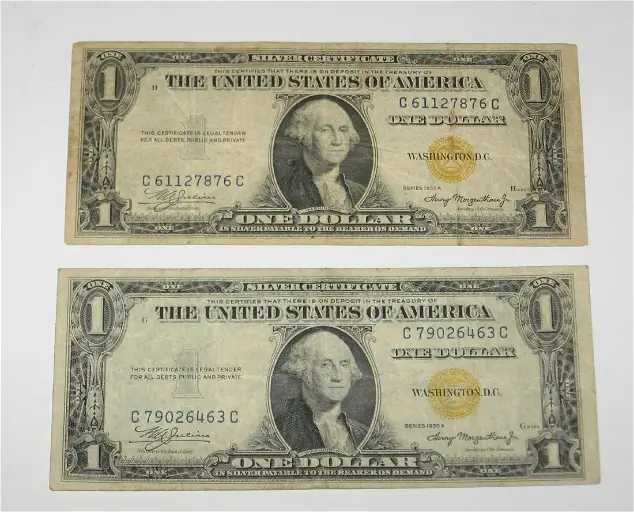The US dollar is among the most recognizable currencies worldwide, but certain bills, like Gold Seal One Dollar Notes, capture the attention of collectors and historians alike. These bills hold a unique place in monetary history, combining rarity, historical significance, and collectible value.
Historical Background of Gold Seal One Dollar Notes
Gold Seal One Dollar Notes were primarily issued as part of the 1928 Gold Certificate series. The gold seal signified that the note was backed by gold reserves held in the US Treasury, allowing holders to redeem it for its equivalent value in gold. These notes were a key feature of the gold standard, a system where the value of currency was directly tied to gold.
The issuance of gold certificates continued until 1933, when the US government abandoned the gold standard during the Great Depression. President Franklin D. Roosevelt’s Executive Order 6102 prohibited private ownership of gold coins, bars, and certificates, effectively ending the circulation and redemption of gold-backed notes. Today, surviving examples of these bills are rare and highly sought after.
Why Gold Seal One Dollar Bills Are Important
Rarity is a major factor in their value. Limited releases and government recalls make surviving bills prized among numismatists. Beyond scarcity, these notes offer a tangible link to the early 20th century economy, representing the policies and financial systems of the gold standard era. Collectors value them for both their historical importance and their collectible appeal.
Factors That Determine Market Value
Condition:
-
Uncirculated (UNC): Bills that have never been used and show no wear are the most valuable.
-
Extremely Fine (EF): Minimal signs of handling, near-perfect condition.
-
Very Fine (VF): Minor folds or creases, but still well-preserved.
-
Fine (F) and below: Noticeable wear, creases, or tears; still collectible but less valuable.
Serial Numbers and Variations: Unique or small serial numbers, special patterns, or printing anomalies can significantly increase a note’s value.
Historical Provenance: Bills with documented history, clear chain of ownership, or part of significant collections can command premium prices.
Market Trends: The collectible currency market can fluctuate due to broader economic conditions, newly discovered notes, and evolving collector interests. Gold seal bills, however, have consistently held strong market appeal.
Estimated Values:
-
Uncirculated: $500 to $2,000+ depending on rarity and features
-
Extremely Fine: $300–$800
-
Very Good: $200–$400
-
Good and Lower Grades: $100–$200
Conclusion
One Dollar Gold Seal Notes are more than currency—they are artifacts of a pivotal era in American monetary history. Their value arises from a combination of rarity, historical importance, and collector demand. For anyone interested in numismatics or American economic history, these bills provide a fascinating insight into the gold standard era and early 20th century financial policy.
Key Takeaways
-
Historical Significance: Gold Seal notes represent the gold-backed monetary system of the early 20th century.
-
Collectibility: Limited circulation and historical context make them highly desirable.
-
Value Factors: Condition, unique serial numbers, provenance, and market trends determine their current worth.
-
Cultural Insight: Studying these notes offers a deeper understanding of how economic policy shapes currency and value.
